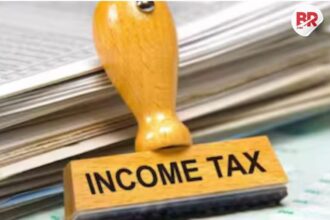
On Thursday, the Indian rupee rose by 5 paise to 87.67 against the US dollar in early trading, despite fresh economic pressure from the US.
At the interbank foreign exchange market, the rupee opened at 87.69 and strengthened slightly to 87.67. This was an improvement from Wednesday’s closing rate of 87.72. Just a day earlier, the rupee had gained 16 paise after hitting record lows.

This rise comes even after US President Donald Trump announced a steep 50% import tariff on Indian goods, mainly because of India’s ongoing oil trade with Russia. These new tariffs will come into effect in 21 days.
The sectors that will be hit hardest by these tariffs include textiles, leather, and seafood exports.
India has strongly criticized the move, calling it “unfair and unreasonable.” Trump’s tariffs on India are higher than those on China (30%) and Turkey (15%), even though all three countries continue to buy oil from Russia.
Experts say this could hurt India’s economy.
Amit Pabari, Managing Director at CR Forex Advisors, said the situation could get worse if no solution is found within the 21-day period. He warned that India’s GDP growth for FY26 might fall below 6%, with a hit of around 40-50 basis points — double the earlier estimates.
He also mentioned that the rupee is still vulnerable because of rising global tensions and uncertainty.
Meanwhile, India’s foreign exchange reserves have fallen by $9.3 billion to $688.9 billion as of August 1. This shows that the Reserve Bank of India (RBI) might be using the reserves to support the rupee.
On the same day, the Indian stock markets also weakened. The BSE Sensex dropped by 335.71 points to 80,208.28, and the Nifty50 fell by 114.15 points to 24,460.05.












